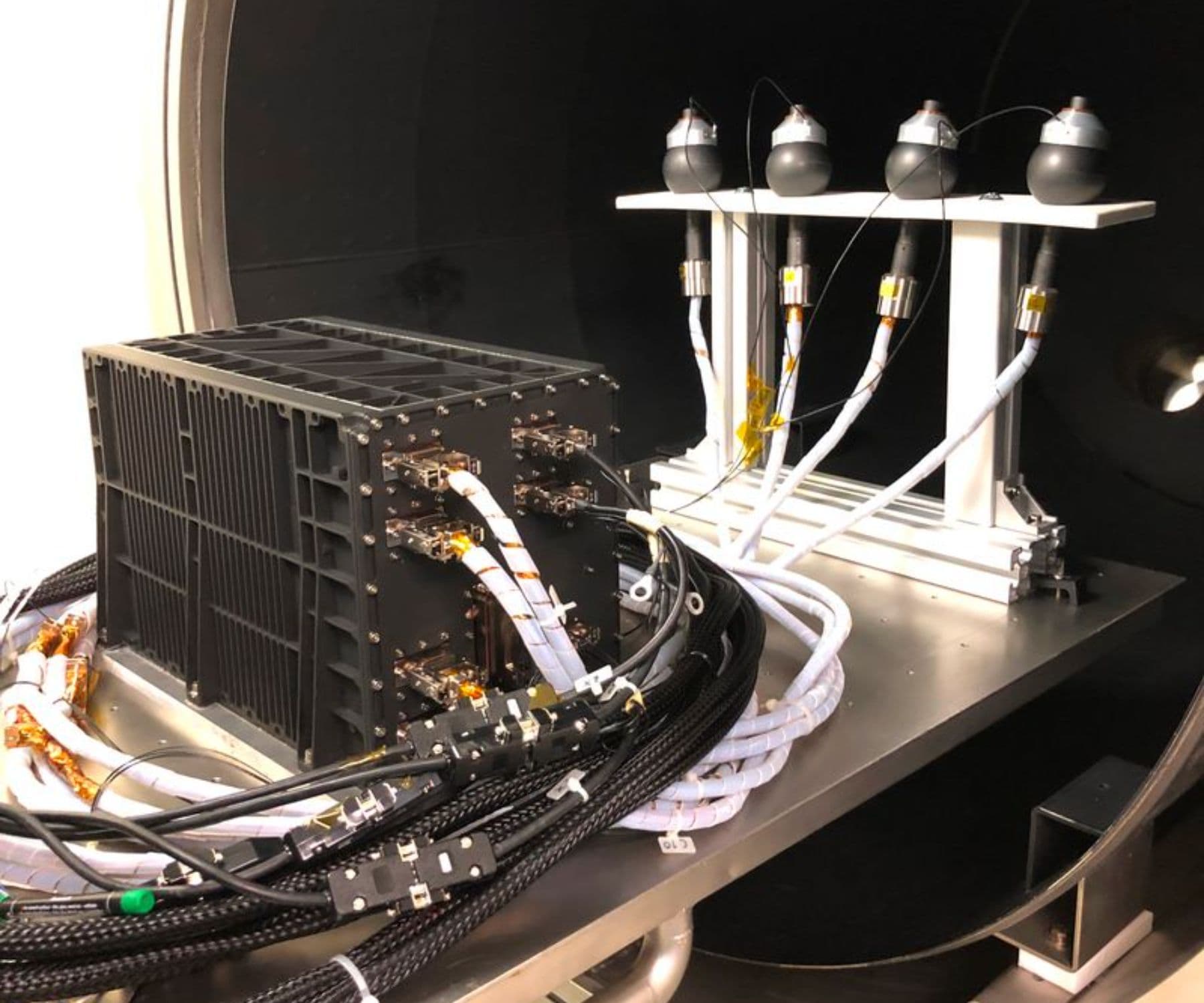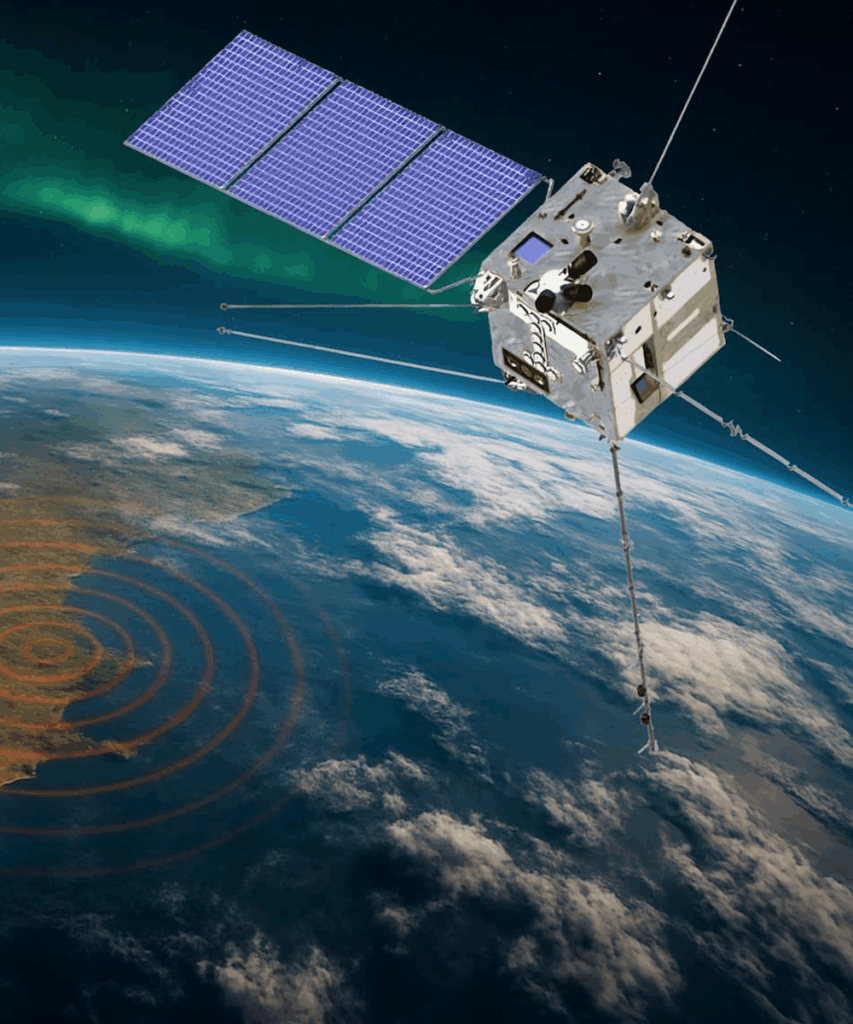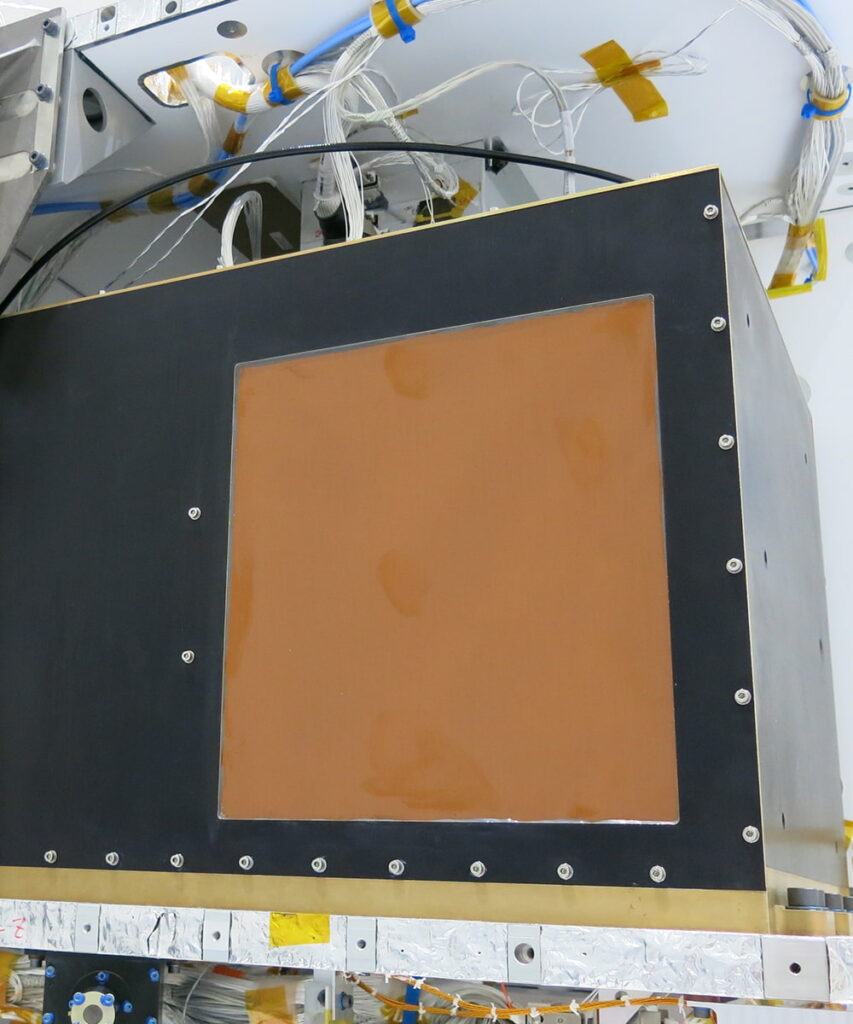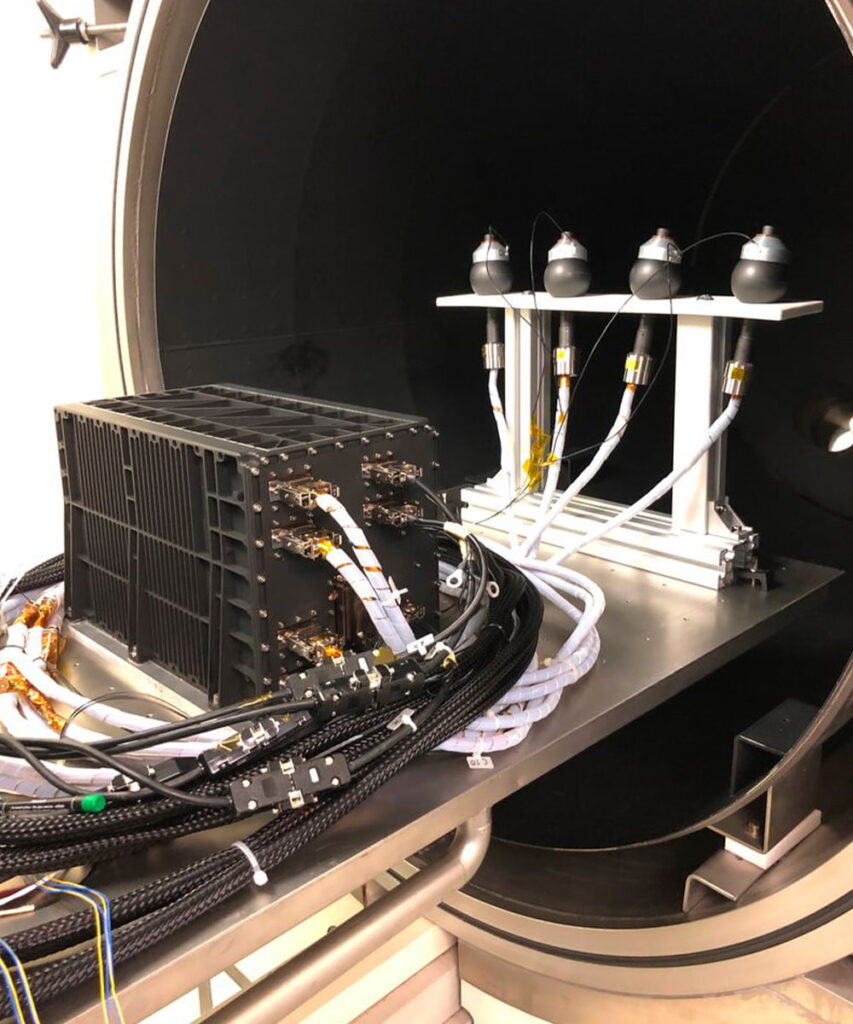The Chinese Seismo-Electromagnetic Satellite (CSES) space missions aim to improve the analyses and the study electromagnetic phenomena related to Space Weather, the physics of the Earth’s ionosphere, and the coupling mechanisms between the magnetosphere, ionosphere, and lithosphere.
On board the CSES-02 satellite, the EFD-02 detector is specifically responsible for measuring the electric field. The instrument will allow measurements of the electric field in various frequency ranges and with a sensitivity of the order of microvolts per meter, which represents the state of the art in terms of sensitivity in the ionosphere.
The instrument is equipped with 4 sensors whose electric potentials float instantly following the potential of the ambient plasma. From the potential difference between pairs of sensors, the measurement of the electric field along their connecting direction is obtained.
The EFD-02 electronics features specific solutions to minimize noise and optimize the scientific information characteristic of the various frequency bands that can be acquired (ULF, ELF, VLF and HF for a total range from DC up to 3.5 MHz).
The instrument works as a balance that counterposes the space plasma currents with a current injected by the electronics (called bias current). Thanks to the innovative ability to manage the bias current injection in “self-adaptive” mode, the instrument will be able to follow variations in ionospheric plasma density up to 6 orders of magnitude (i.e. from 10¹² to 10⁶ m⁻³) without saturation effects in the measurements.
The measurements carried out by the EFD are of fundamental importance for the study of space weather, as they will allow, together with the data collected on the magnetic field, to monitor the electromagnetic oscillations encountered along the orbit generated by the dynamics of the ionospheric plasma induced both by fluctuations in the solar wind (solar forcing) and by terrestrial dynamics (lithospheric activity).
Low-frequency data will allow monitoring of plasma structures modulated by solar perturbations in transit in the interplanetary medium, i.e. the effect of solar forcing on plasma currents present in the complex ionospheric system. Oscillations in medium frequencies will provide information on the dynamics of the ionosphere also in association with the precipitation of particles from the radiation belts.
Of particular interest in this band is the monitoring of gravito-acoustic waves that can be generated on the ground during seismic activity in the lithosphere to be observed in the ionosphere. High frequencies can provide local information on violations of plasma neutrality induced by sporadic anomalies of external nature (solar forcing) or internal (lithosphere-ionosphere coupling).

The Electric Field Detector (EFD-02) aboard the CSES-02 satellite is engineered to measure three-dimensional electric field components in the ionosphere with enhanced sensitivity and spatial resolution. Building upon its predecessor, EFD-01, EFD-02 introduces significant advancements in both hardware and data processing to address challenges such as spacecraft-induced noise and data throughput limitations.
EFD-02 employs four spherical Electric Field Probes (EFPs), each mounted at the end of a 4.5-meter boom arranged in a tetrahedral configuration.
This setup minimizes electromagnetic interference from the spacecraft and ensures the probes operate outside the spacecraft’s plasma sheath. Made of aluminum alloy and coated with black graphite (DAG 213) for thermal stability, each 30 mm radius probe houses front-end electronics within the sphere.
The instrument’s Electronic Box contains eight boards, providing full cold redundancy across its main subsystems. Key components include the Low Voltage Power Supply (LVPS), Analog Processing Unit (APU), Digital Processing Unit (DPU), Backplane, and Splitter boards. The DPU, based on a Xilinx Zynq SoC, manages data acquisition, processing, and communication with the satellite, operating in both “Survey” and “Burst” modes to balance data quality and transmission constraints.

EFD-02 underwent rigorous testing to ensure its resilience and performance in space conditions. Vibration tests simulated launch stresses, with sinusoidal vibrations ranging from 20–100 Hz up to 8 g and random vibrations from 10–2000 Hz with an overall acceleration of 7.55 g RMS. Additionally, the instrument was tested in the INAF-IAPS Plasma Chamber to assess its compatibility with the space plasma environment and to evaluate the effects of plasma and geomagnetic field variations on the floating potential measurements.
EFD-02 introduces several key innovations. Among these we recall:
These enhancements position EFD-02 as a critical instrument for advancing our understanding of ionospheric dynamics, space weather phenomena, and potential lithosphere-ionosphere coupling events.
For a comprehensive overview, refer to the full article: Electric Field Detector on Board the CSES-02 Satellite for Characterization of Ionospheric Plasma Dynamics.
In depth

CSES-02 satellite is based on the Chinese CAST2000 platform. It has a mass of 900 kg...
Read more
HEPD-02 has been designed to meet the demanding tasks of an excellent particle detector in...
Read more
The EFD-02 (Electric Field Detector) allows us to measure the electric field components in a...
Read more
Read more